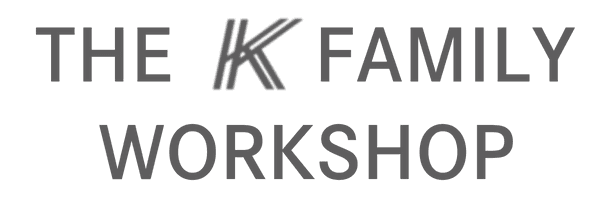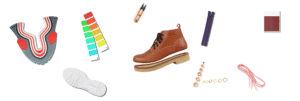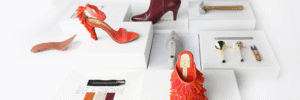Boot manufacturing is a detailed, precision-driven process that combines engineering, craftsmanship, and material science. Unlike regular footwear, boots require stronger materials, thicker leather, reinforced structures, and highly accurate pattern work to ensure durability and comfort. From selecting premium hides and developing precise lasts to executing complex construction methods such as Goodyear welt, Blake stitch, or Stitchdown, every stage demands expert attention. OEM/ODM production adds another layer of control, involving tech packs, prototyping, revisions, and fit testing before bulk manufacturing. Quality checks—like leather uniformity, shaft alignment, adhesion testing, and waterproofing—ensure each pair meets professional standards. With the right manufacturer, brands can confidently scale from small-batch custom boots to high-volume private-label production.
The Materials That Define High-Quality Boots
High-quality boots begin with materials that are stronger, thicker, and more durable than those used in ordinary footwear. Leather is one of the most defining elements, and understanding its varieties helps brands choose the right balance of durability and aesthetics. Full-grain leather offers the highest strength and natural longevity, while top-grain leather provides a smoother finish with slightly more flexibility. Nubuck delivers a velvety touch with high abrasion resistance, and suede offers softness but requires more protection. Pull-up leather is valued for its rich color transitions and rugged character, often used in work and heritage-style boots.
Because boots are expected to withstand heavy use, they require thicker hides and stronger fibers compared with sneakers. The added thickness provides structure to the boot shaft and enhances protection for the foot and ankle.
The choice of outsole further shapes performance. Rubber outsoles offer grip and durability, EVA outsoles provide lightweight cushioning, TPU adds abrasion resistance, and commando or lug outsoles deliver traction for outdoor or work environments. Inside the boot, midsoles and shanks made from steel, nylon, or carbon fiber ensure stability and arch support—critical for long hours of wear.

Lining materials also matter: breathable mesh for warm climates, insulating microfiber or wool for winter boots, and moisture-control linings for all-day comfort. Hardware such as zippers, eyelets, and speed hooks must be high quality because these components often fail first under stress.
Ultimately, material selection directly affects durability, comfort, and pricing. Premium components increase longevity and performance, making them essential for crafting truly high-quality boots.
Design, Last Development & Pattern Making
The design and pattern-making stage is where a boot truly begins, and this phase demands exceptional precision. The process starts by converting initial sketches into accurate 2D patterns—the blueprint from which every leather panel, reinforcement piece, and lining component is cut. In professional manufacturing, these details are organized inside a Shoes Tech Pack, a document that defines materials, measurements, stitching lines, hardware placement, and tolerances. A complete Tech Pack ensures every design choice can be executed consistently in production.
At the center of accuracy is the last, the 3D form that determines the boot’s fit, silhouette, and arch support. The last influences heel grip, toe box volume, and overall comfort, making it one of the most critical elements documented inside the Tech Pack. A precise last also affects balance and aesthetic proportions.

Boot design requires careful measurement of shaft height, leg curvature, and opening width, since these directly determine comfort and ease of movement. Equally important are toe shapes, heel structures, and fitting dimensions, which must harmonize to create both stability and visual appeal.
Because boots involve more reinforcement layers and complex structures than regular shoes, custom boots require millimetre-level precision in both pattern and last development. A small deviation can affect comfort, shaft alignment, or even the symmetry between the left and right pair.
Modern factories use digital design tools, including CAD pattern software and 3D modeling systems, to increase accuracy and accelerate prototyping. These tools allow designers to refine shapes, adjust measurements instantly, and verify how each pattern wraps around the last—all of which are then clearly recorded in the Shoes Tech Pack for flawless communication with the boot manufacturer.
Step-by-Step Boot Manufacturing Process
The boot manufacturing process involves a series of precise, interconnected steps that transform raw materials into a durable, comfortable, and well-structured pair of boots. This simplified breakdown helps brands, startups, and designers understand how each stage contributes to the final product.
Step1: Cutting the Materials
Boot production begins with selecting clean leather sections free of scars or loose fibers. Craftsmen carefully align the grain direction to ensure strength, flexibility, and consistent appearance. Depending on the project, materials may be cut using CNC machines for high precision or by skilled hand cutters who adjust patterns to natural leather variations.
Step2: Stitching & Upper Assembly
Next, the upper is formed by combining the vamp, quarters, tongue, and heel counter. Reinforcements are added to improve structure and durability. Hardware such as zippers, eyelets, and hooks is installed during this stage. For tall boots, symmetrical stitching is essential to prevent visual imbalance and ensure a stable fit.
Step3: Forming the Boot Shape
During lasting, the stitched upper is pulled over the last to define the boot’s final shape. This includes toe lasting, side lasting, and heel lasting. A smooth, wrinkle-free fit is crucial, and additional adjustments are made around the arch, instep, and heel to achieve ideal comfort.
Step4: Midsole Layer & Shank Placement
A shank—made of steel, nylon, or carbon fiber—is inserted to stabilize the foot. Boots require a stronger support system than regular shoes, making this component essential for long-term comfort.
Step5: Outsole Construction
Outsoles may be attached using cemented, Goodyear welt, Blake stitch, or stitchdown methods. The choice depends on flexibility, appearance, durability, and resoleability.
Step6: Finishing & Final Touches
Finally, boots undergo edge trimming, sanding, polishing, and waterproof coating. Interior comfort checks ensure smooth seams, proper lining placement, and secure heel grip. A last symmetry and height evaluation confirms the pair is balanced and production-ready.
Which Boot Construction Method Should Your Brand Use for Its Next Boot Line?
Choosing the right construction method is one of the most important decisions in boot manufacturing. Each method affects not only durability and flexibility but also cost, weight, and the boot’s long-term repairability. Understanding the strengths of each system helps brands create products that match their market positioning and customer expectations.
Cemented Construction
| Category | Details |
|---|---|
| Key Features | Lightweight, flexible, cost-efficient |
| How It Works | Upper is bonded to the outsole using high-strength adhesive |
| Comfort | ★★★★☆ |
| Durability | ★★☆☆☆ |
| Resoleability | ★☆☆☆☆ |
| Cost Level | LOW |
| Best For | Fashion boots, casual boots, lightweight styles |
Goodyear Welt Construction
| Category | Details |
|---|---|
| Key Features | Premium, long-lasting, water-resistant, easy to resole |
| How It Works | A welt is stitched to both the upper and insole, then the outsole is stitched to the welt |
| Comfort | ★★★☆☆ |
| Durability | ★★★★★ |
| Resoleability | ★★★★★ |
| Cost Level | VERY HIGH |
| Best For | Work boots, heritage boots, premium leather boots |
Blake Stitch Construction
| Category | Details |
|---|---|
| Key Features | Sleek profile, flexible, elegant silhouette |
| How It Works | A single stitch runs through the outsole, insole, and upper |
| Comfort | ★★★★★ |
| Durability | ★★★☆☆ |
| Resoleability | ★★★☆☆ |
| Cost Level | MEDIUM |
| Best For | Dress boots, Chelsea boots, slim-profile boots |
Stitchdown / Norwegian Welt
| Category | Details |
|---|---|
| Key Features | Extremely rugged, outdoor-grade durability |
| How It Works | Upper is flanged outward and stitched directly to the midsole/outsole |
| Comfort | ★★★☆☆ |
| Durability | ★★★★★ |
| Resoleability | ★★★★☆ |
| Cost Level | HIGH |
| Best For | Outdoor boots, mountaineering boots, heavy-duty work boots |
OEM/ODM Boot Production for Brands (Private Label Boot Guide)
OEM and ODM boot production offers brands—both emerging startups and established labels—a flexible way to create differentiated footwear without building an in-house factory. The process typically follows a full private-label development workflow: design → tech pack → prototype → revisions → bulk production. Each stage is essential, especially in boot manufacturing, where structural components such as the shaft, heel counter, shank, and reinforcement layers make the sampling process more complex than regular shoes.
Material customization plays a major role in shaping the identity of a private-label boot line. Brands can choose from a wide range of leathers, hardware finishes, lining materials, and outsole constructions, allowing them to build a product that fits their target market. Custom details such as embossed logos, branded zippers, custom metal hardware, and bespoke packaging further strengthen brand recognition and product value.

Because boots must deliver long-term comfort and durability, proper fit testing and wearer trials are required before finalizing the design. These tests help identify pressure points, shaft fit issues, and flexibility concerns, ensuring that the final product meets quality and comfort expectations.
Partnering with an experienced private label boot manufacturer significantly reduces cost overruns and production delays. Skilled factories understand how small design changes—such as leather thickness, shaft height, or toe shape—affect pattern accuracy, comfort, and long-term durability. They can also guide brands through technical decisions that would otherwise require costly revisions.
Once the design is finalized, private-label boots can easily scale from small-batch orders for niche brands to mass production for global retail distribution. This flexibility makes OEM/ODM manufacturing one of the most effective paths for building a competitive boot line.
Quality Control, Fit Testing & Common Boot-Making Issues
Quality control is a critical stage in boot manufacturing, as boots must meet higher durability and structural standards compared with regular footwear. One of the first checks involves evaluating leather thickness and uniformity, ensuring each panel—from vamp to shaft—maintains consistent density and strength. Any unevenness can cause premature creasing, weak points, or visual asymmetry.
Another major inspection point is shaft alignment, one of the most common defects in boot production. Because boots rise higher up the leg, even a few millimeters of misalignment between the left and right pair can be noticeable. Factories verify that shaft height, curvature, and top-line shape are perfectly matched.
Outsoles undergo adhesion strength testing and flex tests to ensure they remain securely bonded and withstand repeated bending without separation. For outdoor, work, or winter boots, additional checks such as waterproofing and seam sealing are essential to confirm that the boot can resist water penetration during real-world use.
Comfort and performance are validated through fit testing, where testers evaluate heel slip, instep pressure, toe room, and arch support. This step identifies issues that may not appear in static inspections but become evident during wear trials.
Before shipping, every batch is evaluated using AQL standards, followed by checks on packaging, labeling accuracy, and overall presentation. These steps ensure consistency across large production runs.
Finally, reputable manufacturers offer after-production support, such as spare parts, replacement hardware, or repair guidance, helping brands maintain long-term reliability and customer satisfaction. This commitment not only protects product quality but also strengthens brand reputation in the competitive boot market.
Cost Factors in Boot Manufacturing (For Pricing & Budget Planning)
Understanding the cost structure behind boot manufacturing is essential for brands planning new collections or evaluating supplier quotes. Several factors directly influence the final price, ranging from material choices to construction complexity.
The first and most significant factor is material grade and quality. Premium full-grain leather, high-performance membranes, and imported rubber compounds significantly increase costs, while mid-range leathers or synthetic alternatives reduce the budget. Leather thickness and finishing also play a major role; thicker, more durable hides require higher-grade sourcing and more labor to manipulate during lasting and stitching.
Next comes the construction type. Cemented construction is the most affordable, while Goodyear welt and Norwegian welt methods are more labor-intensive and require specialized machinery and skilled craftsmanship. Blake stitch sits in the mid-range, offering a balance of cost and performance.
Hardware and accessories, such as zippers, brass eyelets, speed hooks, toe caps, shanks, and branded metal components, add to the cost—especially when custom-made. Tools and reinforcements inside the boot, often unseen by consumers, also impact pricing.
Another major factor is labor intensity and stitching complexity. Boots generally require more stitching, reinforcement, and quality checks than sneakers, meaning higher labor hours. Designs with tall shafts, double or triple stitching, or rugged outdoor features increase production time and cost.
Finally, brands must consider packaging and shipping. Heavy boots cost more to transport, and premium packaging—such as rigid boxes, dust bags, or custom inserts—adds to both material and freight expenses.
By understanding these factors, brands can better plan budgets, make informed design decisions, and create products that balance cost, performance, and market positioning.
FAQs
The main process involves design and development, pattern making, materials selection and cutting, stitching and upper assembly, lasting (forming the upper over the last), sole attachment, and finally, finishing and quality control.
Boots are constructed from a variety of materials including full-grain leathers, split and suede leathers, textiles, synthetic fabrics, linings, and a range of sole materials like natural rubber, EVA, polyurethane, and thermoplastic polyurethane (TPU).
Typical outsole construction methods include Goodyear welt (high durability and replaceability), cemented construction (lightweight, flexible), stitch-down construction (sturdy, with visible stitching), and direct-injection molding (efficient, watertight for safety boots).
Lasting is the step in which the assembled upper is stretched and secured over a foot-shaped mold called a last; this process defines the final contour, volume, and fit of the boot, and is fundamental for both comfort and consistent sizing.
Essential equipment includes cutting tools or press, sewing machine(s), skiving tools, shoe lasts, lasting pliers or small lasting machines, sole pressing/bonding equipment, and finishing tools such as trimmers and polishers for final detailing.
Quality control means checking the integrity of all materials, evaluating upper pattern and stitching strength, ensuring correct bonding between upper and sole, confirming comfort and fit, and conducting a thorough inspection before packaging to meet high standards.




